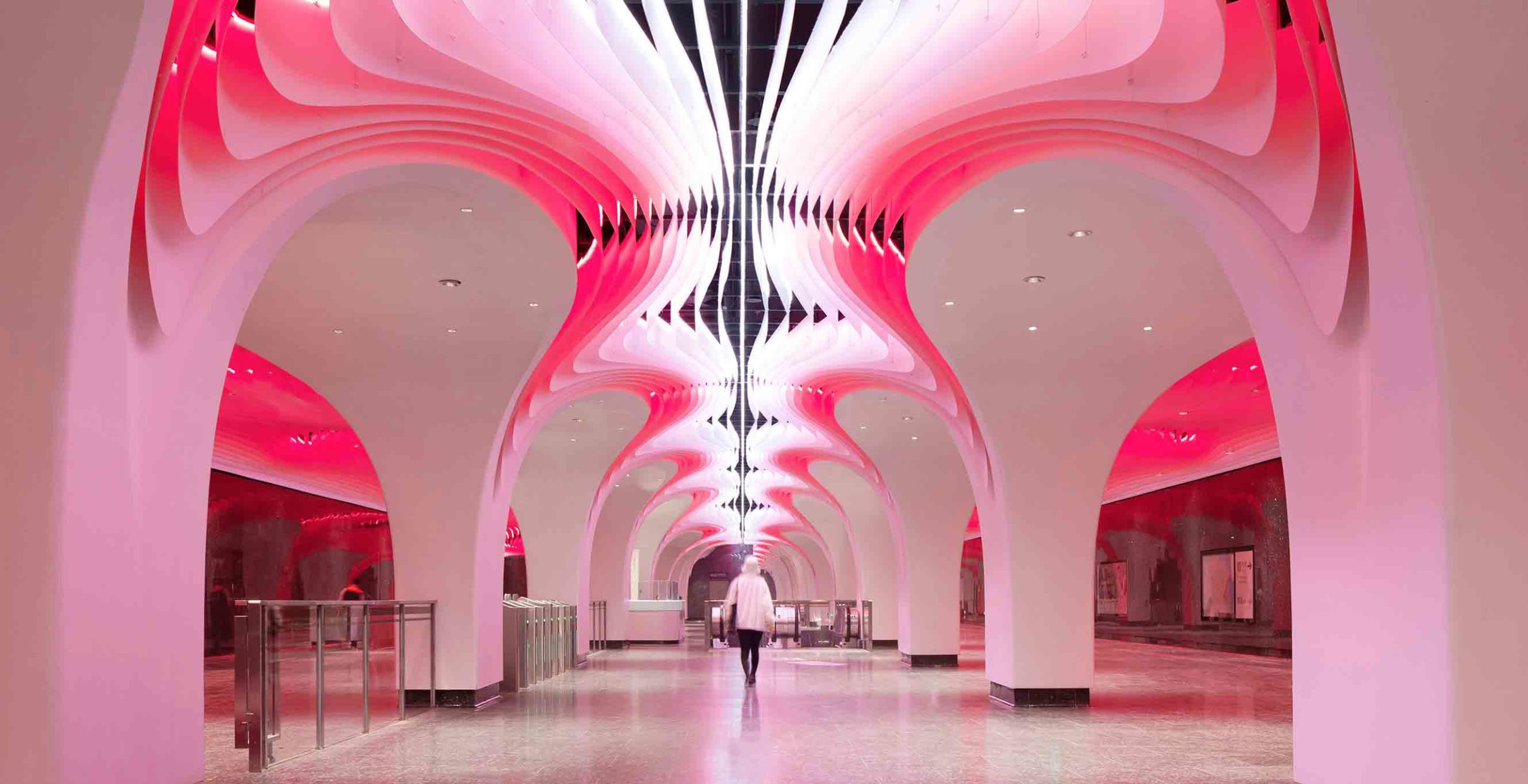The jury's votes are in — Architizer is proud to present the winners of the 2025 Vision Awards! Join the program mailing list and continue celebrating the world's best architectural representations by clicking here.
Architecture is the backdrop for life’s everyday moments. As one of the most personal and unique building types, residential homes are intimately tied to how we experience the world. Designed to provide comfort and perspective, these homes are organized around the rhythms and rituals of how we live. In turn, a home’s structural system shapes the atmosphere and light, as well as how we transition between spaces. A growing trend in home structural systems is glulam, an engineered wood composite that creates support and warmth for residential interiors.
Glulam, short for glued laminated timber, consists of layers of dimensioned timber bound together with high-strength adhesives. While timber framing is nothing new, applying glulam in residential design is less common. Today, these projects are building upon tradition to explore exciting new assembly methods and structural applications. With an array of sizes and shapes for beams and columns, glulam is designed for heavier loads, longer spans and flexibility. Showcasing this system in contemporary homes, the following projects highlight how to create inviting residential interiors that uplift and inspire.
The Bear Stand
By Bohlin Cywinski Jackson, ON, Canada
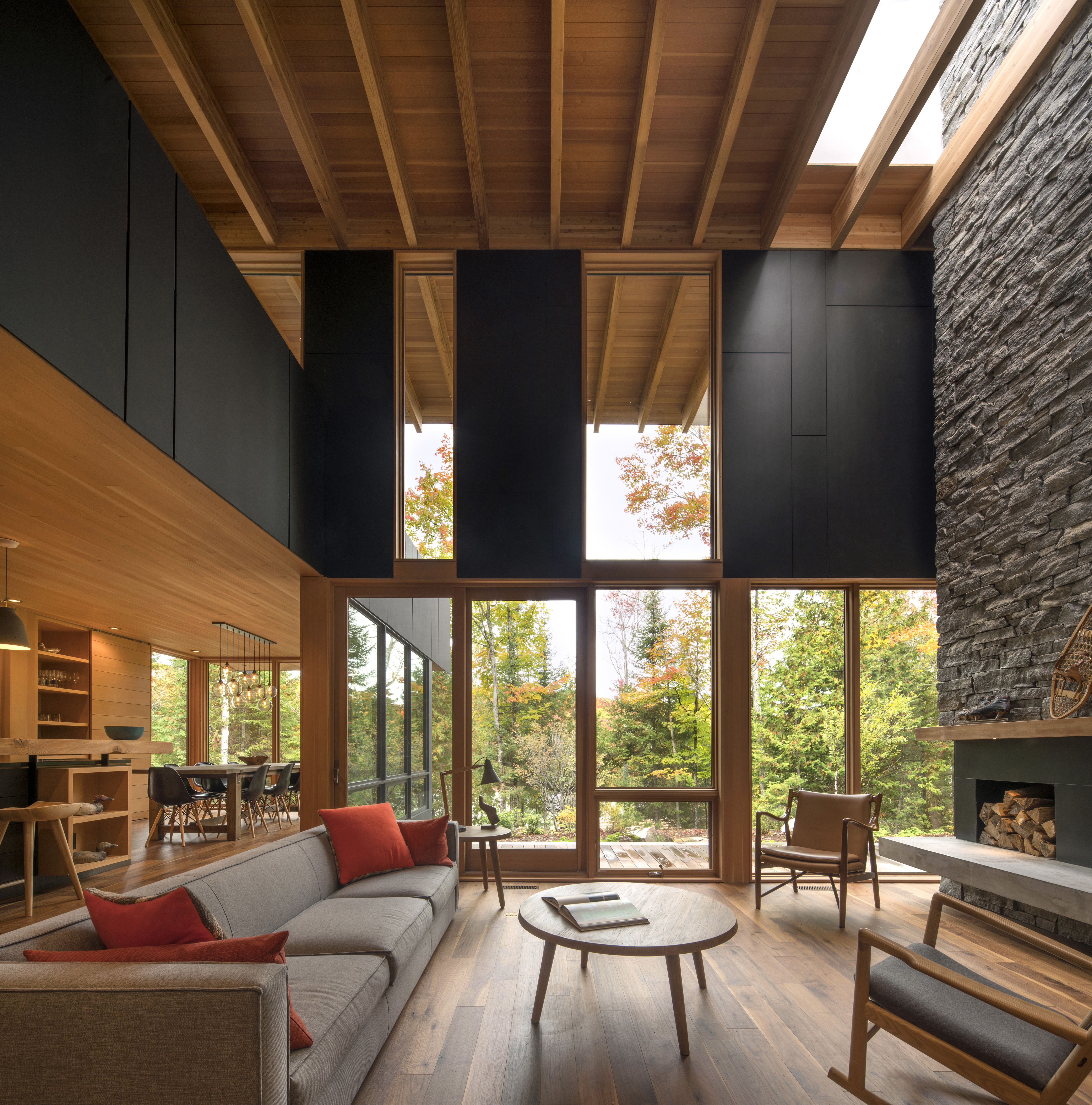
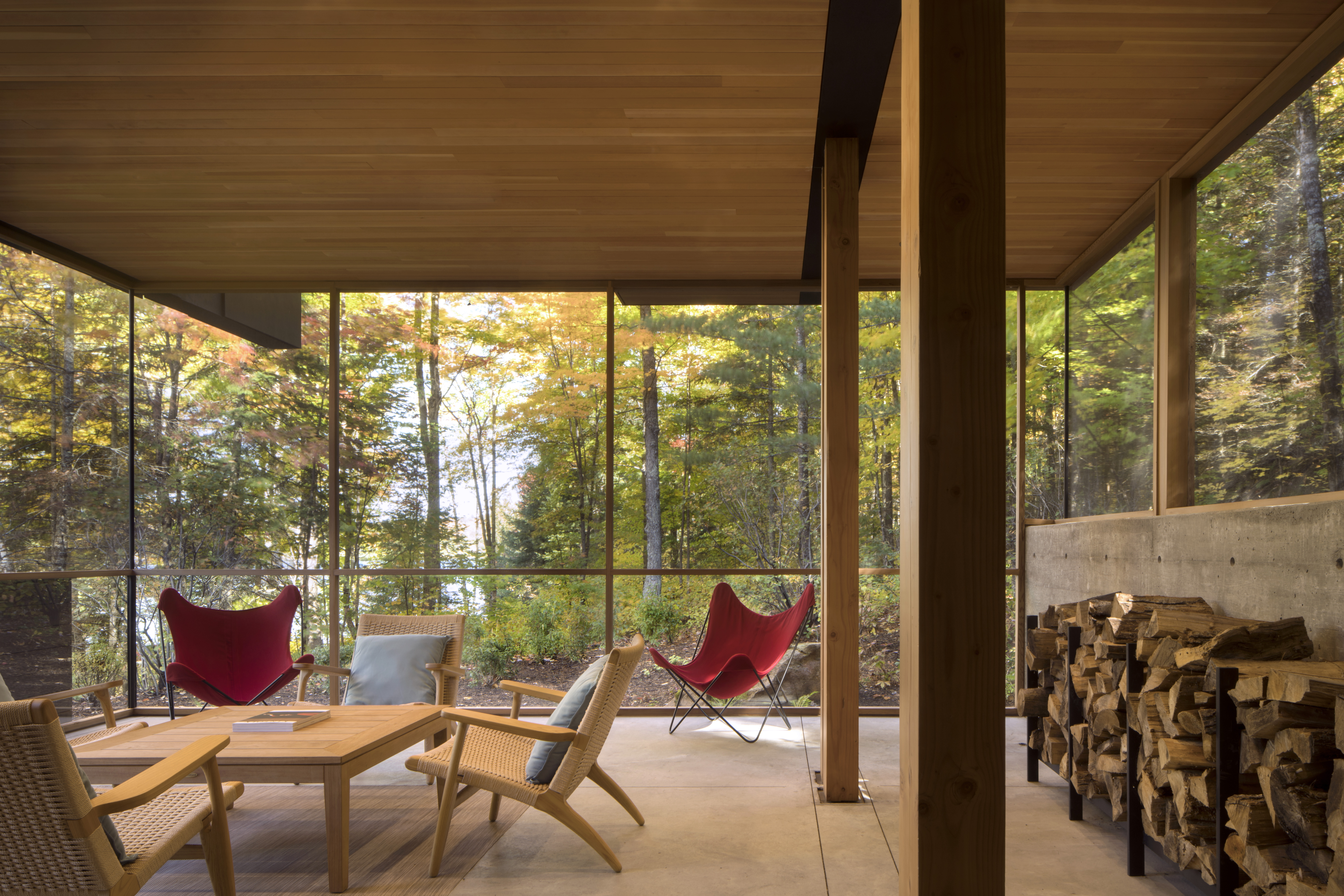 This quiet retreat is carefully situated along the shores of Contau Lake on a remote, seasonally isolated woodland. Nestled between the lake and an adjacent granite rock-face rising up to the south, the retreat serves as a jumping-off point to an expansive private trail network fashioned by the client.
A raft of exposed Douglas fir glulam beams and decking cantilevers out over a rhythmic façade of black fiber-cement panels and stained cedar siding that mimic the lines of the forest.
This quiet retreat is carefully situated along the shores of Contau Lake on a remote, seasonally isolated woodland. Nestled between the lake and an adjacent granite rock-face rising up to the south, the retreat serves as a jumping-off point to an expansive private trail network fashioned by the client.
A raft of exposed Douglas fir glulam beams and decking cantilevers out over a rhythmic façade of black fiber-cement panels and stained cedar siding that mimic the lines of the forest.
Interiors are finished with fir windows, wire-brushed walnut flooring, benches and bar tops reclaimed from a nearby barn, and hand-crafted tile. This palette of materials lends a tactile softness to the building that blends with the natural environment.
Easterbrook House
By Dorrington Atcheson Architects, Auckland, New Zealand
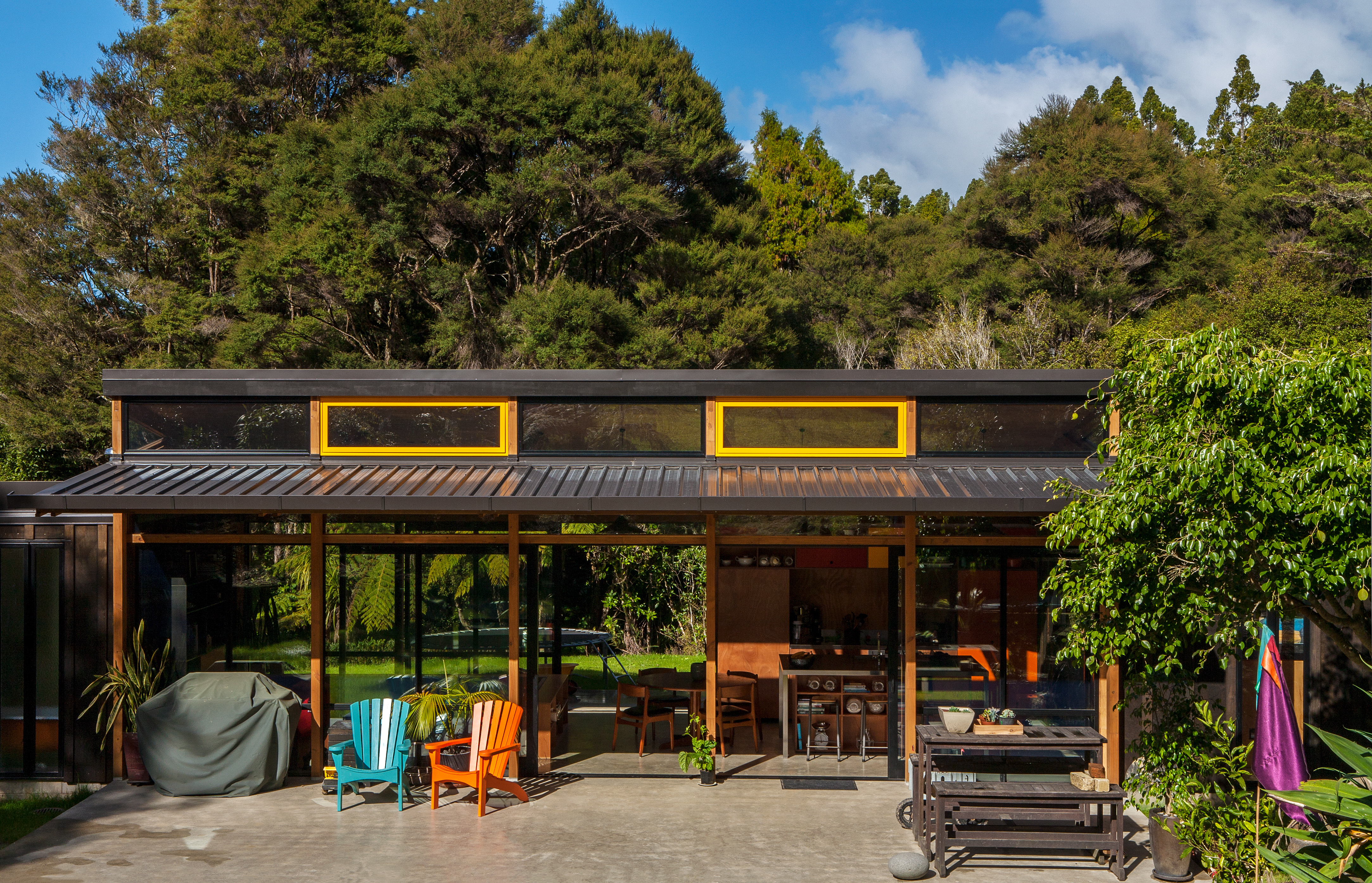
 Sited for sun, seclusion and views of the surrounding bush, this main dwelling and its “mini-me” cousin share an aesthetic. Taking cues from the utilitarian forms of a tent and a shed, this Titirangi home for an extended family is a duo of compact buildings that uses a humble set of materials to allow the landscape a central place in the scheme. The primary home is conceived as a barn-like pavilion with bedrooms for adults and kids located at opposite ends.
Sited for sun, seclusion and views of the surrounding bush, this main dwelling and its “mini-me” cousin share an aesthetic. Taking cues from the utilitarian forms of a tent and a shed, this Titirangi home for an extended family is a duo of compact buildings that uses a humble set of materials to allow the landscape a central place in the scheme. The primary home is conceived as a barn-like pavilion with bedrooms for adults and kids located at opposite ends.
A canopy-like roof is strung between these more-solid bookends to architecturally mimic a tarpaulin. The split-truss roof allows an external pergola to shade the home in summer, and clerestory windows bring in low winter light. The home combines glulam beams, plywood walls and ceilings, aluminum joinery and concrete floors.
1/3 House
By Rever & Drage Architects, Møre og Romsdal, Norway

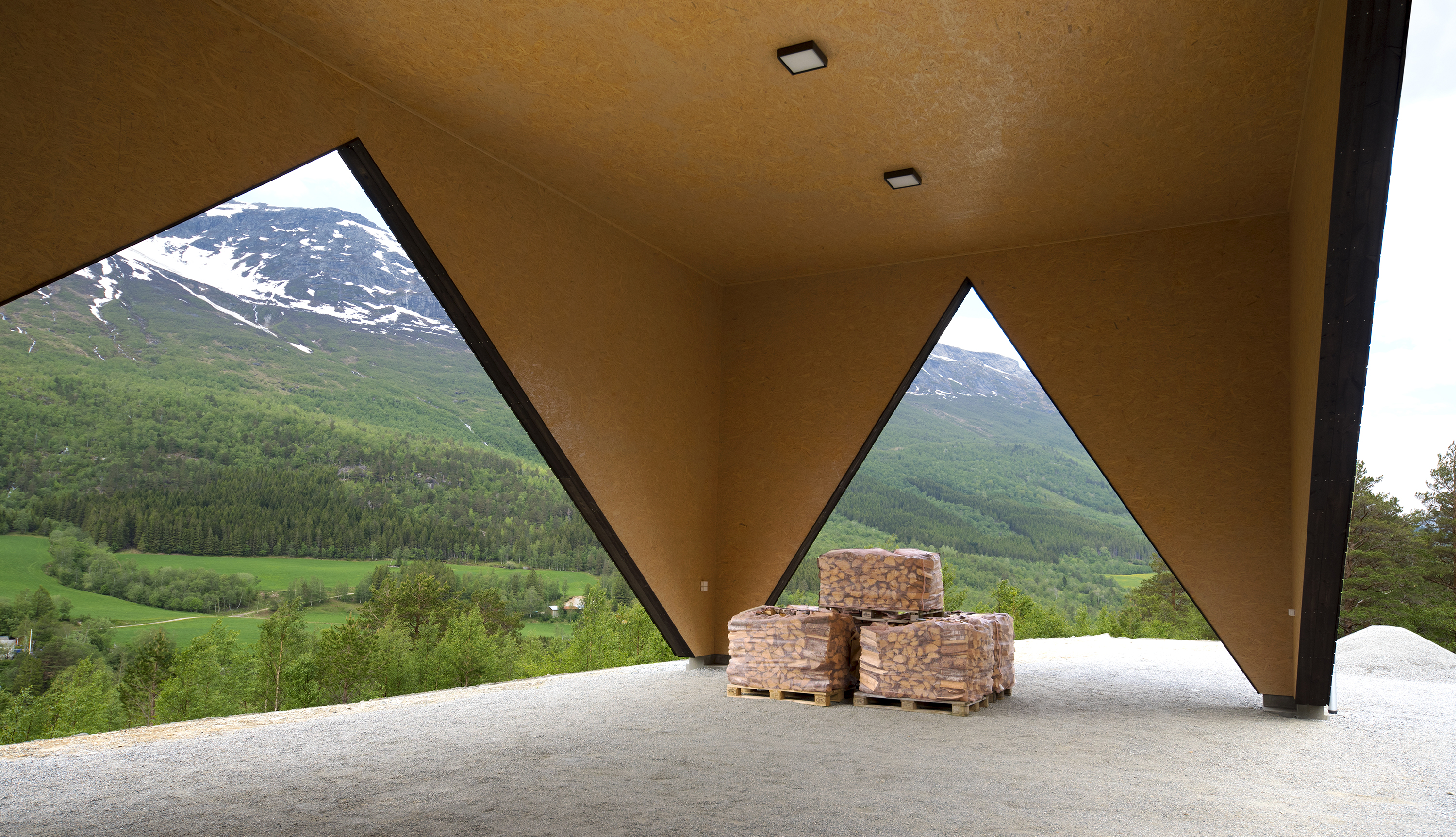 Designed as a detached house for a young couple in Sunndal, the clients wanted to build a small home they could afford with limited funds. At the same time, they envisioned that their family would grow and they therefore wanted the building to be easily expandable, open to further possibilities depending on how life develops. The man wanted a romantic and cosy building while his wife, who is a deer hunter, wanted a building that was practical with room for guns and other hunting equipment.
Designed as a detached house for a young couple in Sunndal, the clients wanted to build a small home they could afford with limited funds. At the same time, they envisioned that their family would grow and they therefore wanted the building to be easily expandable, open to further possibilities depending on how life develops. The man wanted a romantic and cosy building while his wife, who is a deer hunter, wanted a building that was practical with room for guns and other hunting equipment.
In turn, the roof over the utility space is help up by tilted glulam columns. These are built into the wall panels, but help define the openings towards the views of the landscape. Under this roof there is an indoor/outdoor feeling — the space is both open and closed at the same time.
Casey Key Guest House
By Sweet Sparkman, Sarasota County, FL, United States
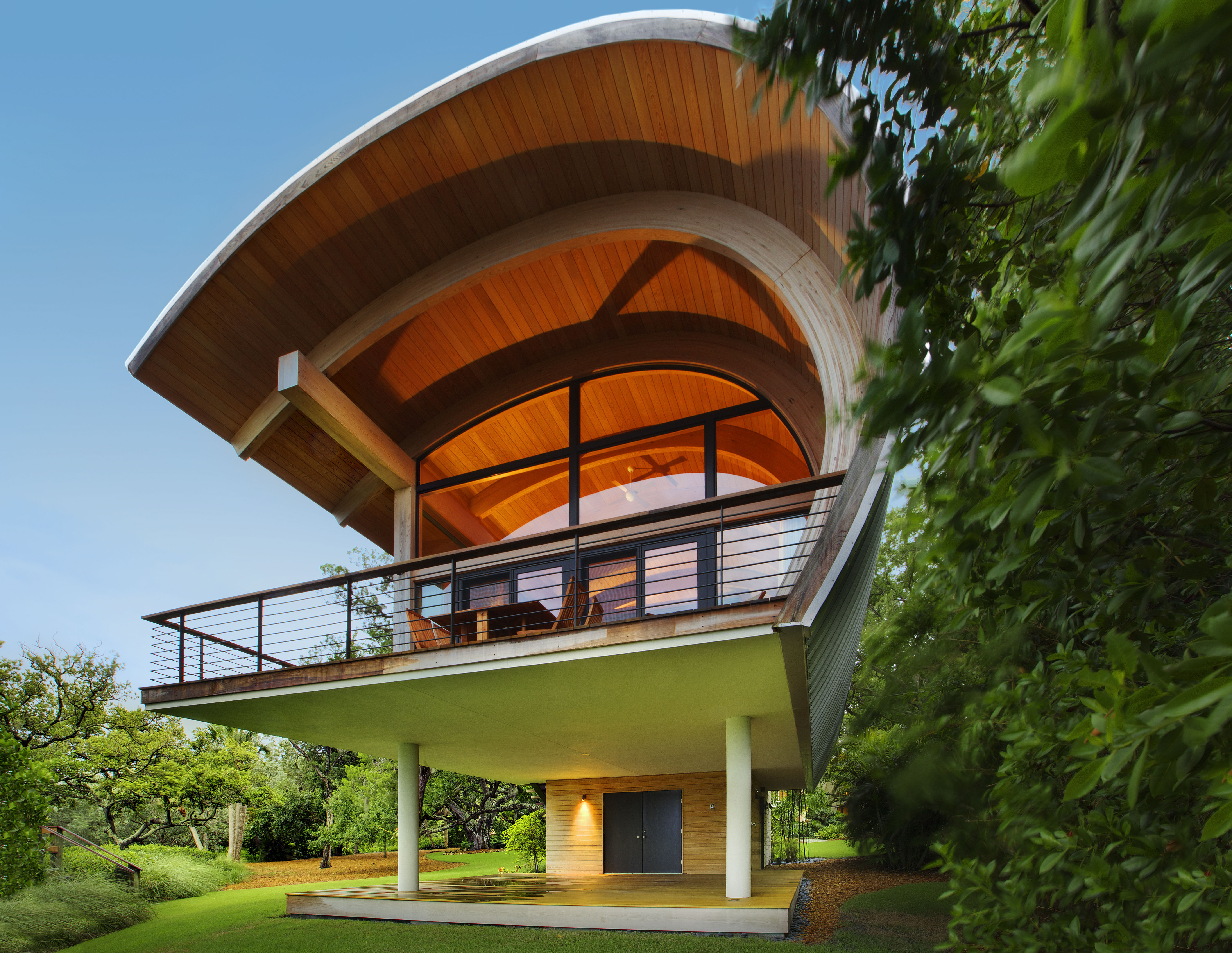
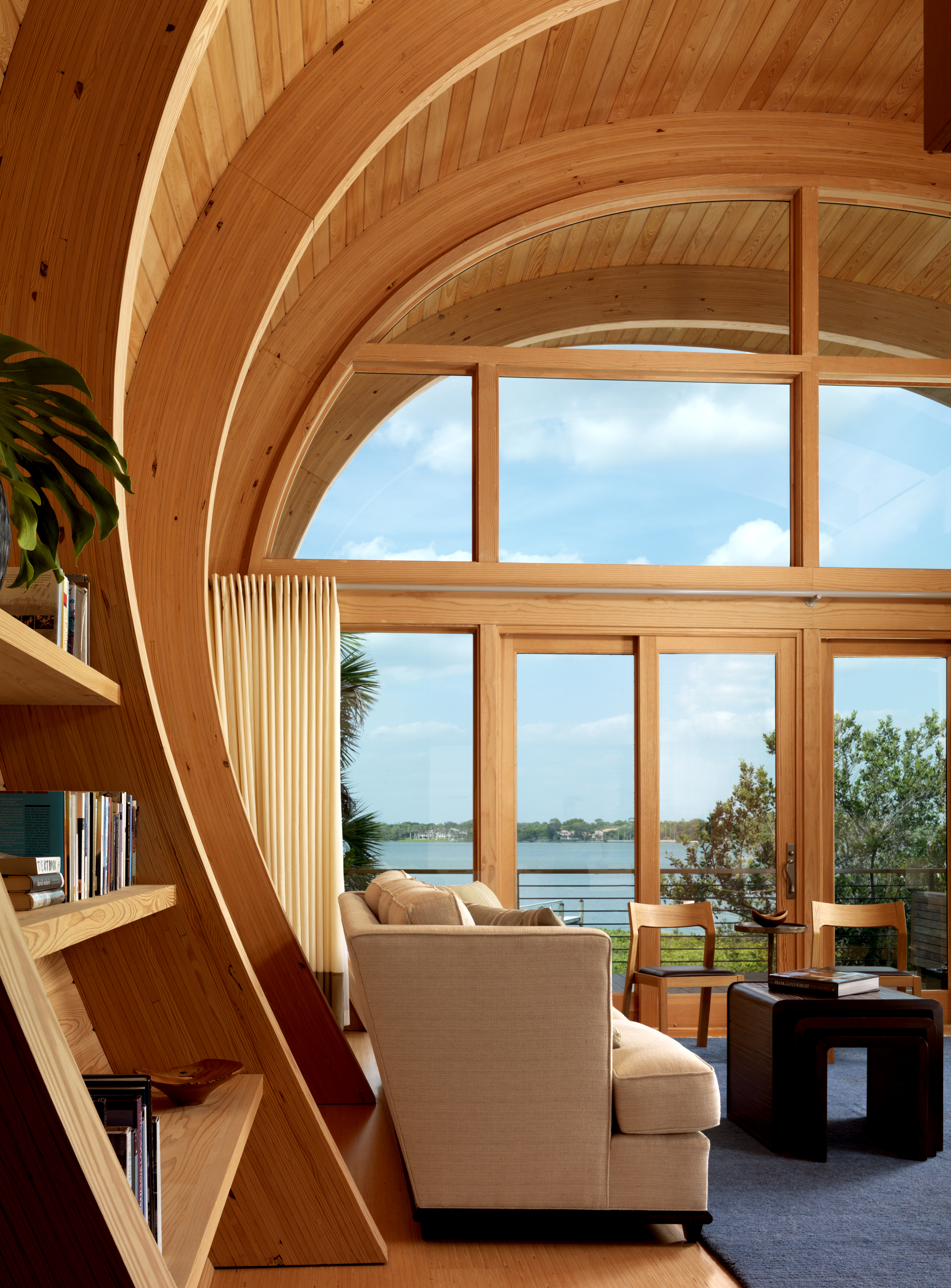 This small, single family guest house is set within a mature oak hammock, located on a barrier island on Sarasota bay. The narrow island is approximately 600 feet (182 meters) wide at the project site, and spans between the Gulf of Mexico and Sarasota Bay. Limbs shaped by the prevailing coastal winds from the west provided inspiration for the shaping of the structure. To achieve this goal, glulam beams were utilized to enfold the structure around the space. Reflecting the arching quality of the live oak limbs, curved, laminated pine beams anchored at their base to the elevated concrete slab, curve over the entire space, blurring the distinction between wall and ceiling.
This small, single family guest house is set within a mature oak hammock, located on a barrier island on Sarasota bay. The narrow island is approximately 600 feet (182 meters) wide at the project site, and spans between the Gulf of Mexico and Sarasota Bay. Limbs shaped by the prevailing coastal winds from the west provided inspiration for the shaping of the structure. To achieve this goal, glulam beams were utilized to enfold the structure around the space. Reflecting the arching quality of the live oak limbs, curved, laminated pine beams anchored at their base to the elevated concrete slab, curve over the entire space, blurring the distinction between wall and ceiling.
House Husarö
By Tham & Videgård Arkitekter, Sweden
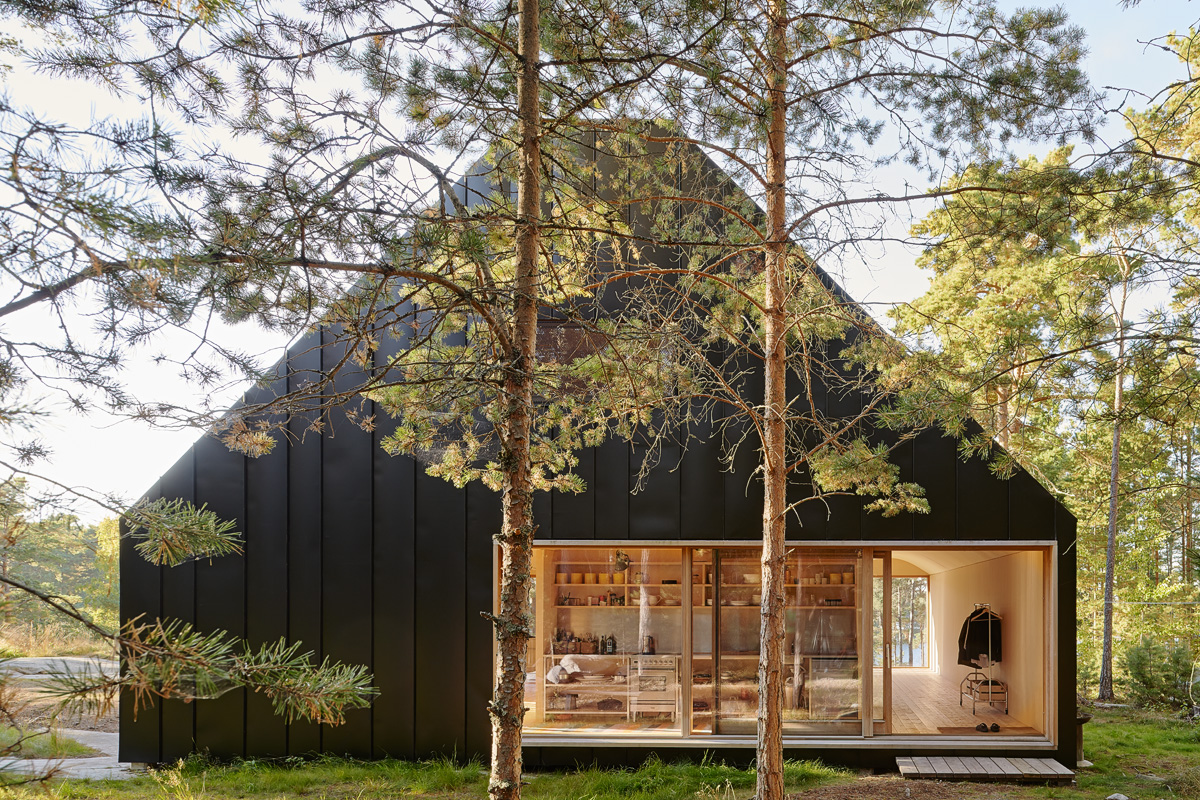
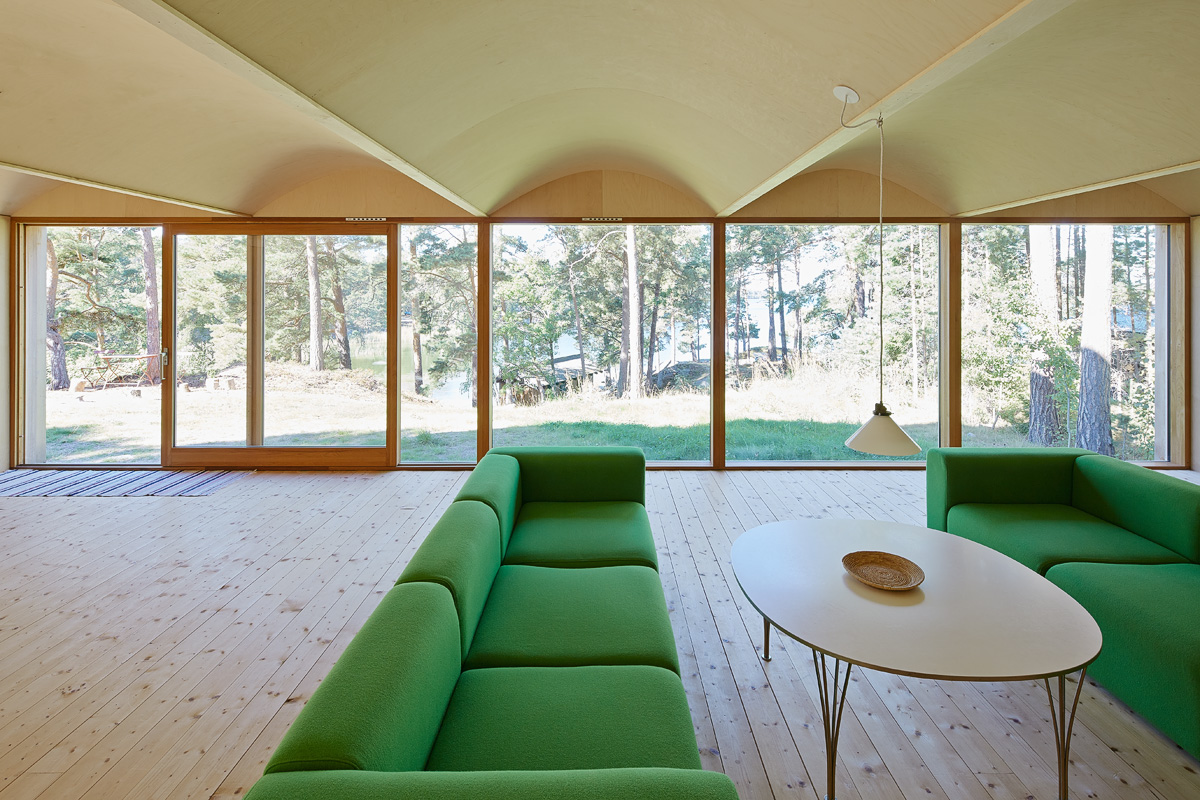 Located on the outer Stockholm archipelago, this home is surrounded by tall pines on a forested site. The house is placed in a clearing with a high position in the landscape, on a plateau facing the sea in the north. The property has been in the family for a long time with a couple of small complementary buildings, a boathouse and a guesthouse, that has been used for vacation stays.
Located on the outer Stockholm archipelago, this home is surrounded by tall pines on a forested site. The house is placed in a clearing with a high position in the landscape, on a plateau facing the sea in the north. The property has been in the family for a long time with a couple of small complementary buildings, a boathouse and a guesthouse, that has been used for vacation stays.
As the family grew with a new generation, the need for a larger house with more space followed. All construction and finishes are made out of wood. The open plan is made possible with glulam wooden beams. Between these beams plywood sheets has been bent to form a series of vaults that add direction to the interior spaces.
m.o.r.e. Cabin
By Kariouk Architects, Wakefield, Canada
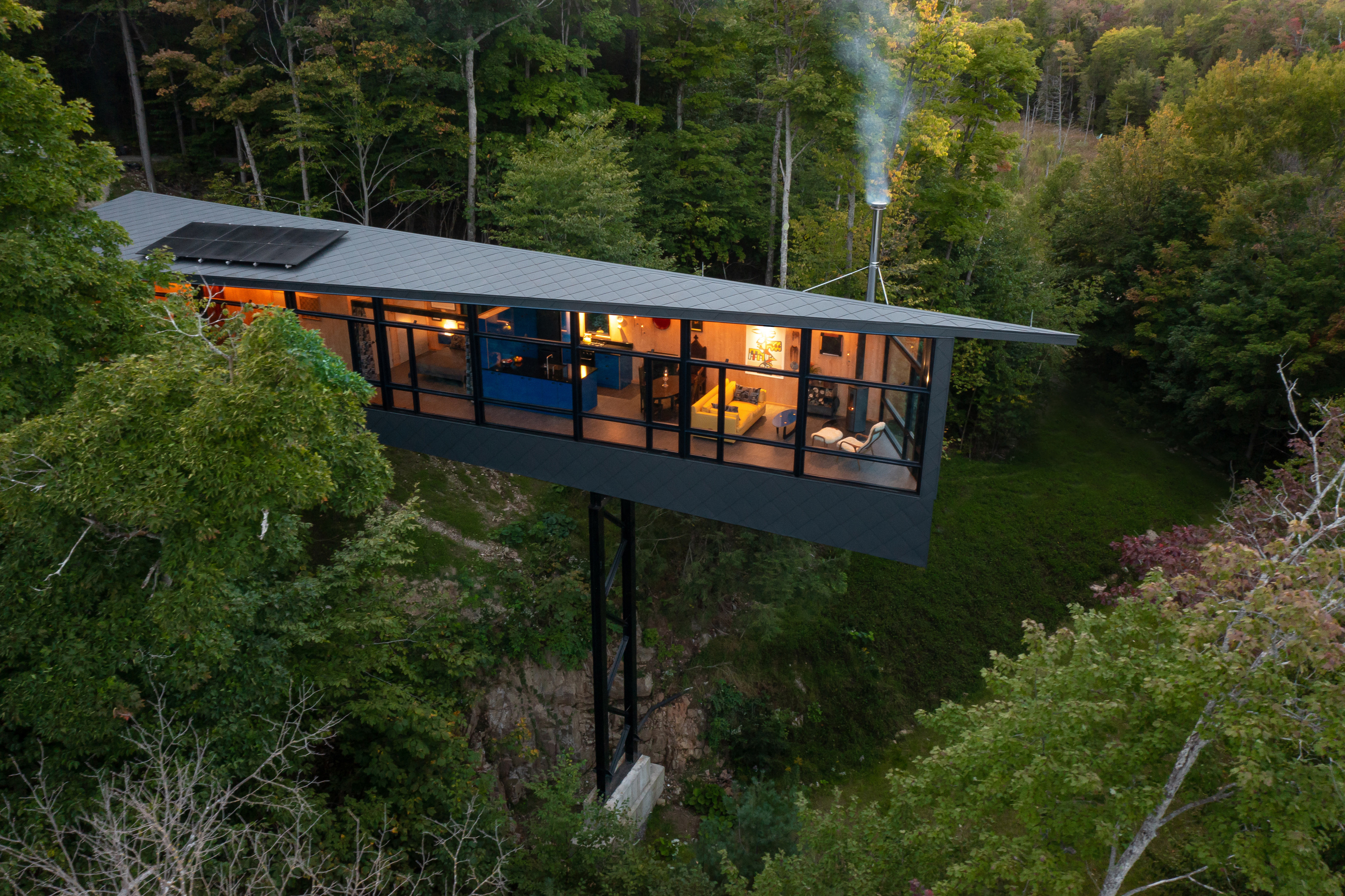
 As the design team notes, typical cottages are “woodsy” versions of suburban homes with every modern convenience; such buildings sustain the myth that appearing to be one with the land equates to a reduced impact on the environment. The m.o.r.e. Cabin inverts this idea through a separation from the landscape that is more sustainably constructed than other cottages.
As the design team notes, typical cottages are “woodsy” versions of suburban homes with every modern convenience; such buildings sustain the myth that appearing to be one with the land equates to a reduced impact on the environment. The m.o.r.e. Cabin inverts this idea through a separation from the landscape that is more sustainably constructed than other cottages.
One technical solution to the environmental issue involved a single concrete footing and a steel “mast” placed within the required setback. The home is also built with suitably-sourced CLT panels and glulam beams. The CLT was milled offsite then hoisted into place, avoiding damage to the landscape by the maneuvering of construction machinery.
House on Krokholmen
By Tham & Videgård Arkitekter, Värmdö, Sweden
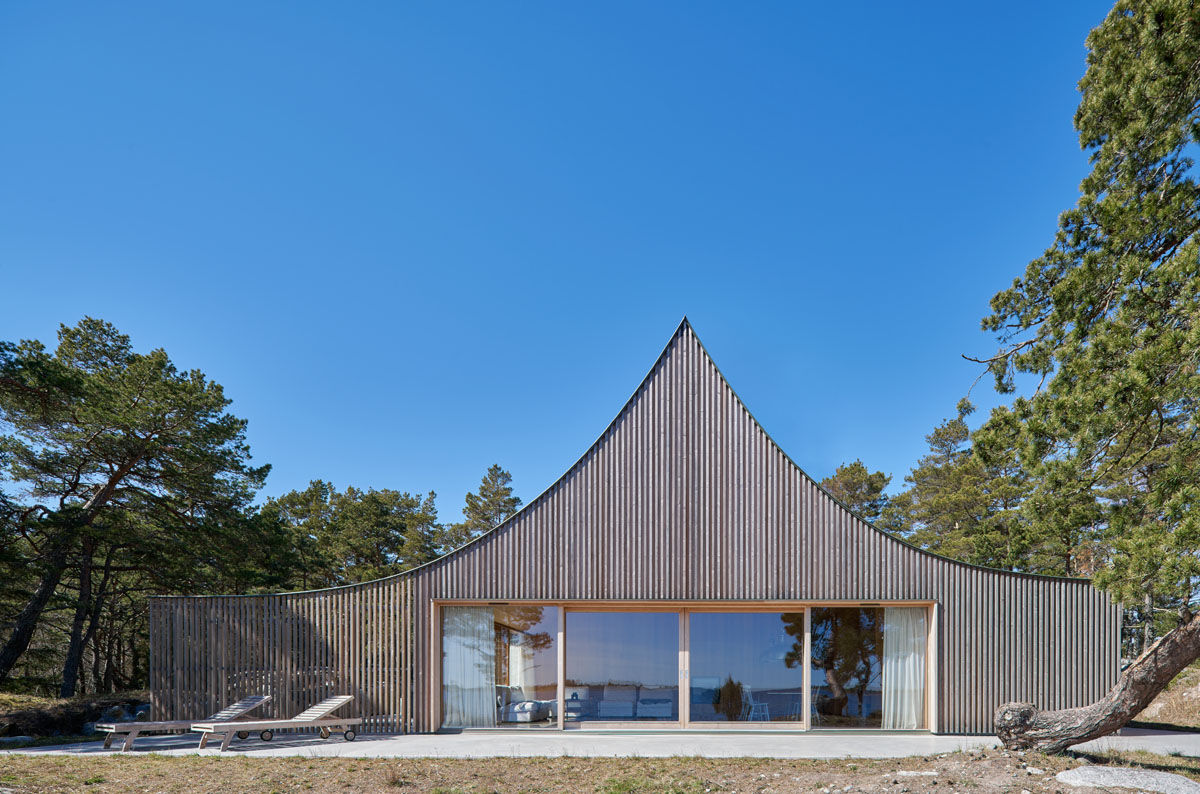
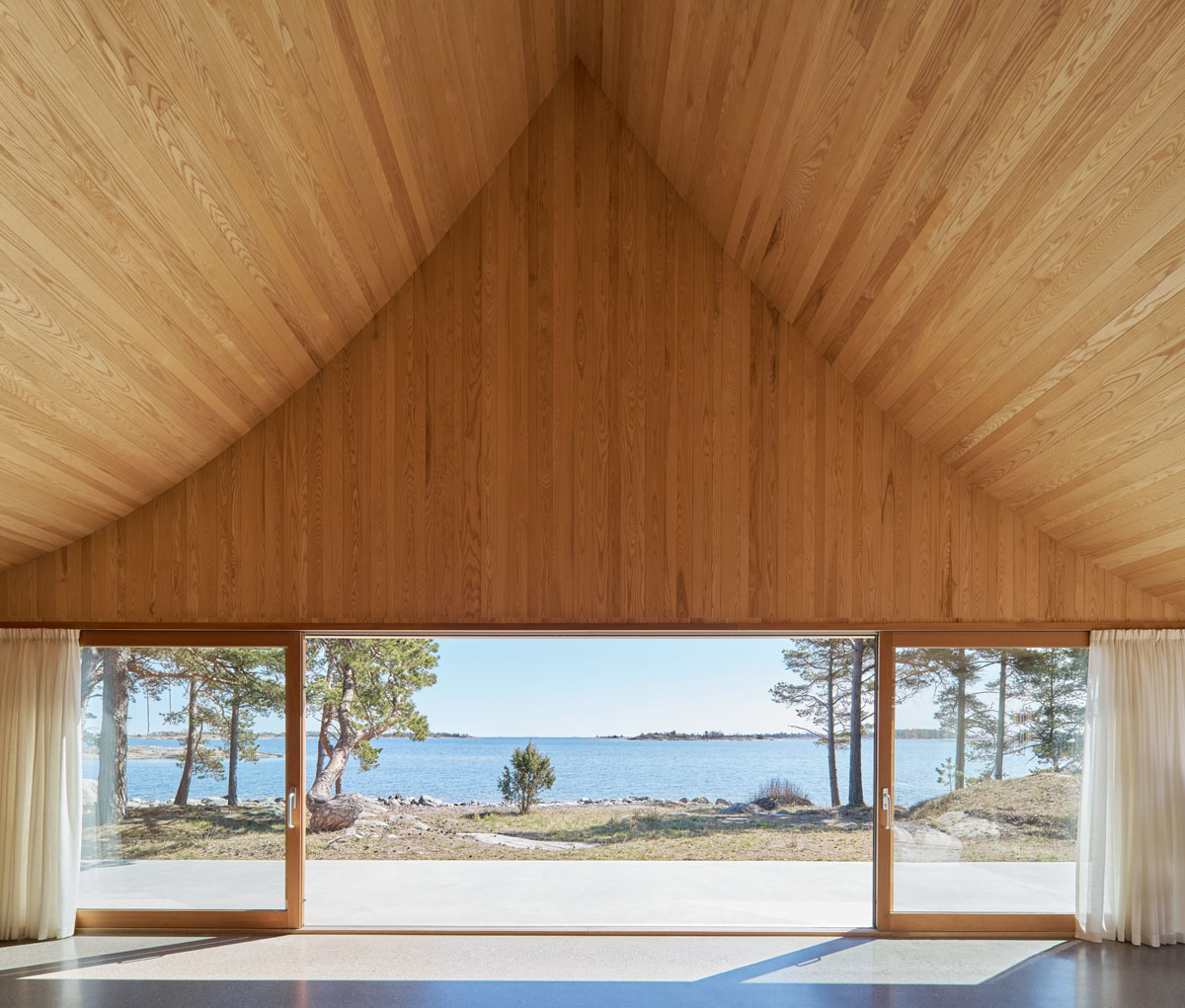 The family for this home on Krokholmen wanted a maintenance-free vacation home in one level with social space both inside and outside. To this end, the design team proposed a two-part plan. Through a central wall holding the fireplace, a narrow opening gives access to bedrooms, bath and storage, that are oriented to the forest in the west. The large family room with kitchen and entrance could thus face out towards the sea with daylight and view in three directions.
The family for this home on Krokholmen wanted a maintenance-free vacation home in one level with social space both inside and outside. To this end, the design team proposed a two-part plan. Through a central wall holding the fireplace, a narrow opening gives access to bedrooms, bath and storage, that are oriented to the forest in the west. The large family room with kitchen and entrance could thus face out towards the sea with daylight and view in three directions.
The tent-like room and silhouette of the house connects to the idea of the least complicated way to spend time in nature, but it is also inspired by the older Swedish pavilion and gazebo architecture, light buildings carefully placed in the landscape. Construction and finishes are made entirely of wood with the exception of a steel girder distributing loads above the main facade. Curved glulam beams rest on the low gable facades and meet along a ridge roof beam.
The jury's votes are in — Architizer is proud to present the winners of the 2025 Vision Awards! Join the program mailing list and continue celebrating the world's best architectural representations by clicking here.

 1/3 House
1/3 House  Casey Key Guest House
Casey Key Guest House  Easterbrook House
Easterbrook House  House Husarö
House Husarö  House on Krokholmen
House on Krokholmen  The Bear Stand
The Bear Stand 